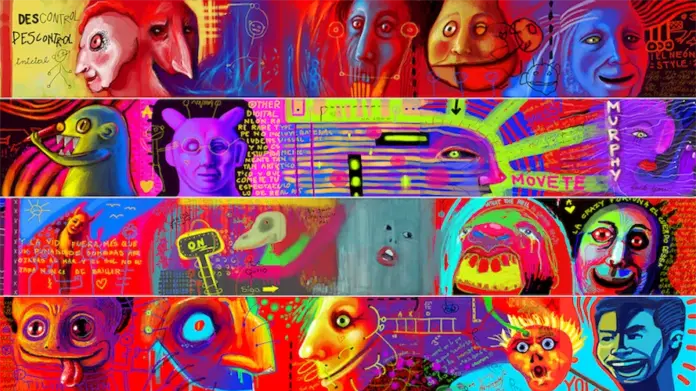
Autonomy means the freedom for people to realize their full potential.
“
Autonomy is defined as the ability to make informed, uncoerced decisions. In the Invisible Economy, where art is separated from its market, autonomy means the freedom for people to self-direct and follow their curiosity, hone their skills, experiment with others, get feedback, have a community that values what they do, and realize their full potential. A guaranteed basic income allows artists to make art irrespective of the market.
Emmanuel Kant argued that people voluntarily subject themselves to be ruled by external entities like the Church and the State. For him, enlightenment is the process by which people can bypass this obedience to external authority and attain autonomy. Today, we are subject to free-market norms, and in order to achieve real autonomy, we need to understand their impact on our behavior.
In the art-on-blockchain community, decentralization is often understood as radical disintermediation: as the power artists have to control and promote their work, set prices, negotiate directly with collectors without gatekeepers, launch their own currencies, and be able to take their work across platforms without depending on any particular platform. While these empowering gains are made possible by blockchain technology, this notion of artistic autonomy is still performed under market norms.
This begs the question: does autonomy mean being able to make art that satisfies a market, having to decide where to sell it, promote it, set a price, and negotiate directly with the buyer? Or is autonomy the freedom to explore artistic self-expression without constraints of any kind other than our own?
Artists make art of unquantifiable value yet they still need to sell their art to make a living. But how do you put a price on a labor of love, dedication, and genuine feeling? This is how many artists feel when they have to price their work. Price is not about the amount of time spent, the cost of the materials, or whether the artwork is any good. The ineffable aspects of art-making like self-expression, creativity, and your own creative sense of self cannot really be quantified. People behave differently and have different expectations when they make art just because they enjoy it, or when they collect art because they love it rather than when they make art with the intention to sell it or buy art with the goal to make a profit.
Dan Ariely’s research shows that under market norms, where money is involved, people behave more selfishly, less cooperatively, and less altruistically.
Ariely explains that social norms “include the friendly requests that people make of one another. Could you help me move this couch? Could you help me change this tire? Social norms are wrapped in our social nature and our need for community. They are usually warm and fuzzy. Instant paybacks are not required. It’s like opening a door for someone: it provides pleasure for both of you, and reciprocity is not immediately required.”
In contrast, market norms “are very different. The exchanges are sharp-edged: wages, prices, rents, interest, and cost-and-benefits. Such market relationships are not necessarily evil or mean, in fact, they also include self-reliance, inventiveness, and individualism, but they do imply comparable benefits and prompt payments.”
In today’s art market this is irrelevant, art is just another vehicle for the wealthy to move capital around. In today’s economy, art has become financialized and it’s just another asset class that generates capital gains, much like stocks or real estate. Hence the astronomical sums paid by collectors for art at auctions, and the proliferation of freeports — tax havens in which the world’s most expensive art changes hands without ever seeing the light of day.
“
Analysis – “I really enjoyed this article, the voice and content had their best intentions. The way they spoke about art and the artists favored authenticity over monetary gain. It displayed ways that like-minded art sellers are combating high art culture with new ways to auction artwork by way of the Channel auction and Vickrey auction. It touched briefly on the way that NFT art is hendling itself:
“We find this kind of auction deleterious to art and artists alike, since its focus is to drive the price up as much and as fast as possible, like betting at the racetrack. This type of auction is not about the art or the artists, but about sheer speculation. Its game mechanics also imperil the autonomy people exercise when deciding what and how much to bid for.”
I couldn’t agree more. NFT artwork should be a fad, it is one utility of blockchain technology and has created a terrible first impression for the public on NFTs.
In the beginning of the article it talks about the autonomy of the artists, and why they create. It goes on to talk about how finance has marred the purpose of art and artists. It seems to me that what the world of Art needs is less banking and less finance. Of course, this will never happen though. Personally, I am not sure that I agree or even where I stand on this topic. but it paints a spectrum for me. On one end is this article, where art should almost be free from the market and world of finance. On the other end of the spectrum is every other article on NFT art I have read, where they don’t even understand or take into account the purpose and reason art is made. It is a world somewhat more grounded in reality where art is an asset.
Lastly, it is refreshing to hear about the topic of guaranteed income which they mention briefly in the introduction. Diving into all of these other topics of banking has made me forget about a basic income which is worth investigating for this project.” – Easton Nguyen



